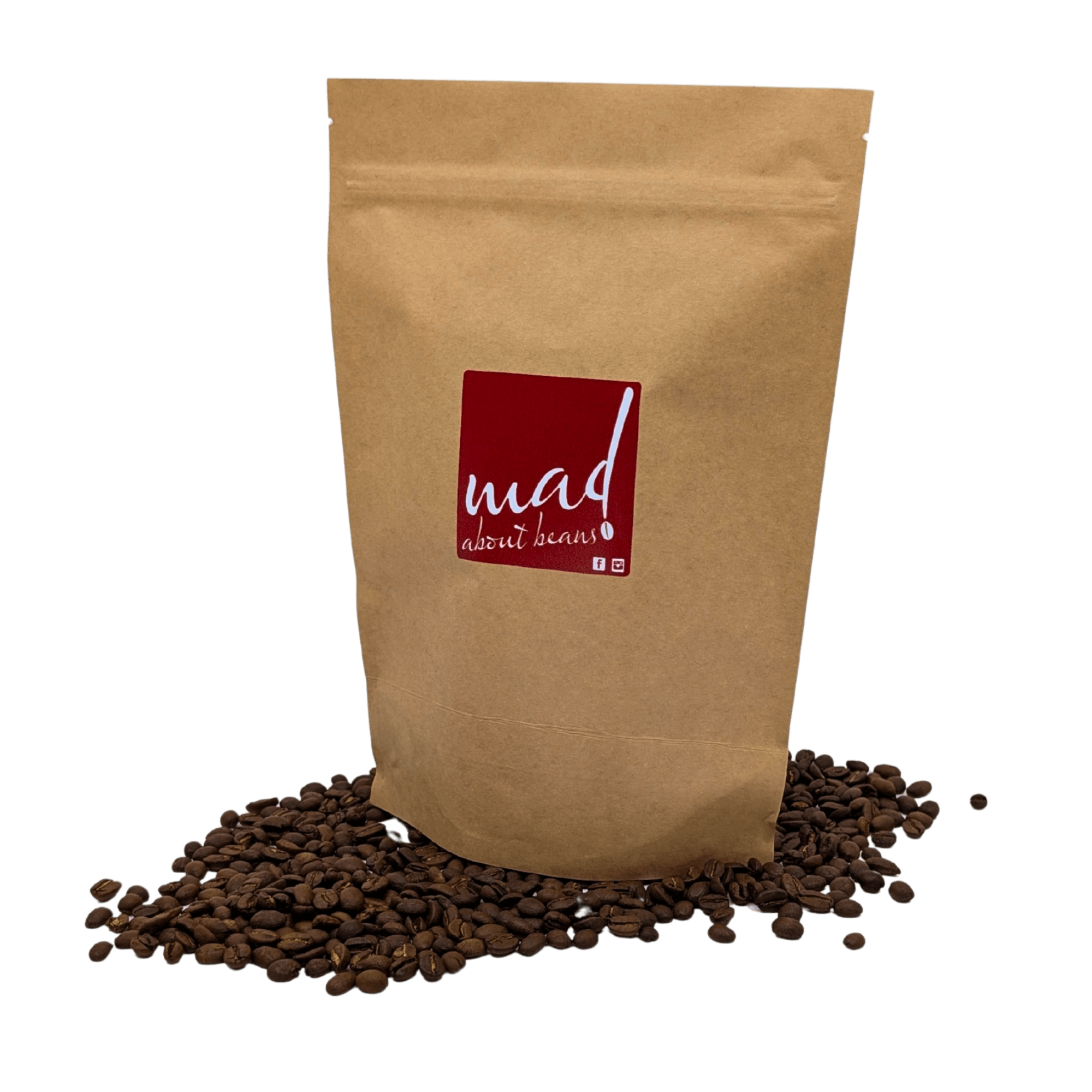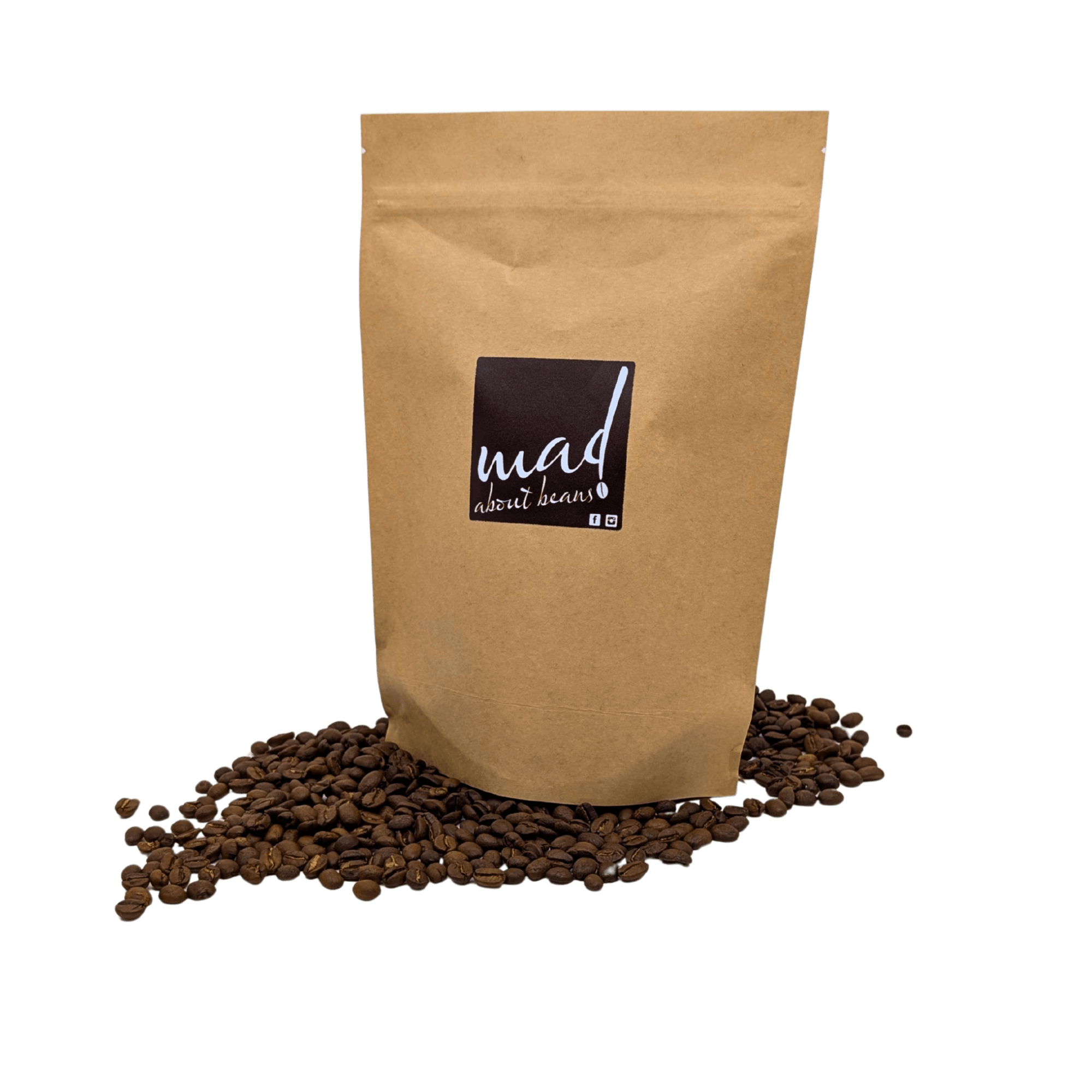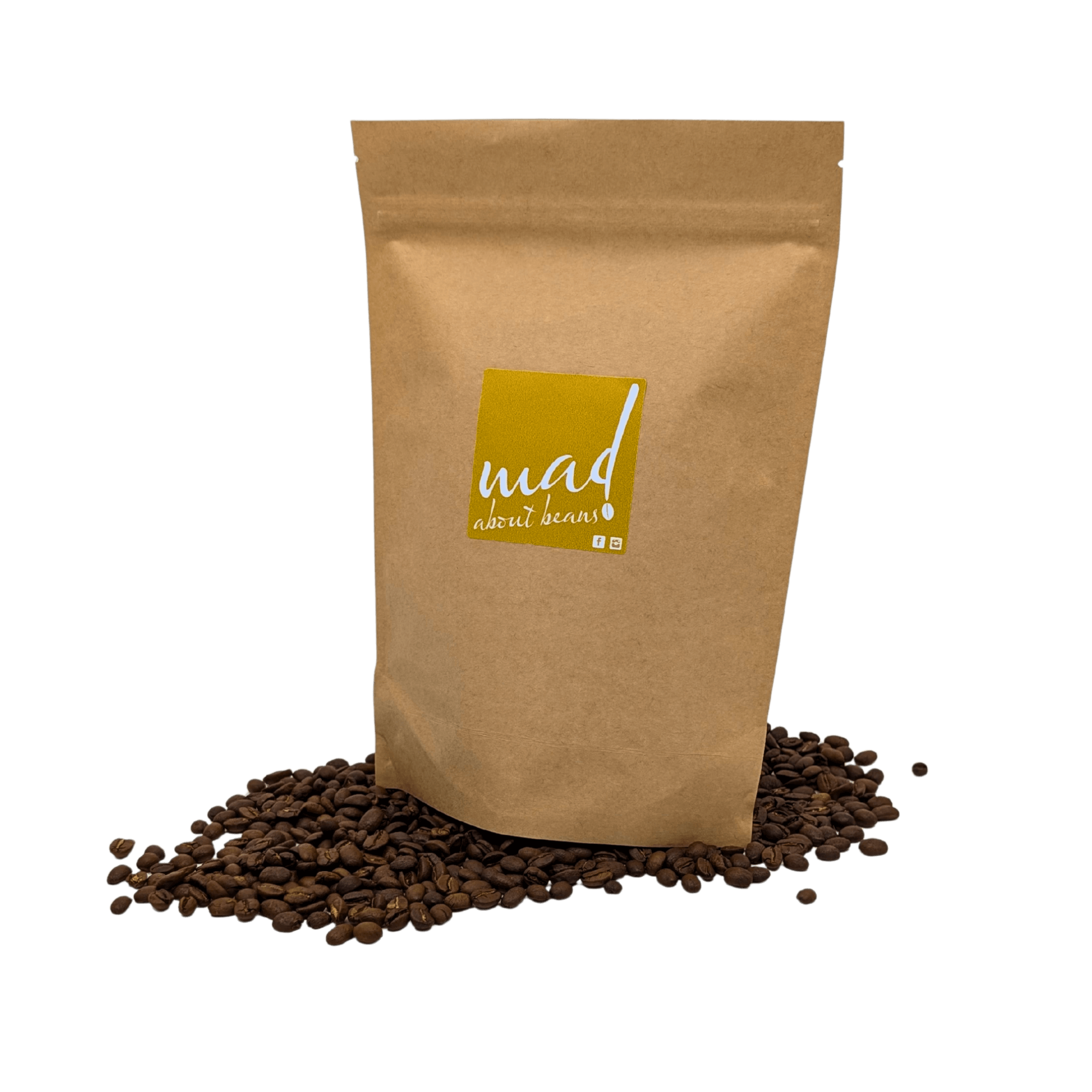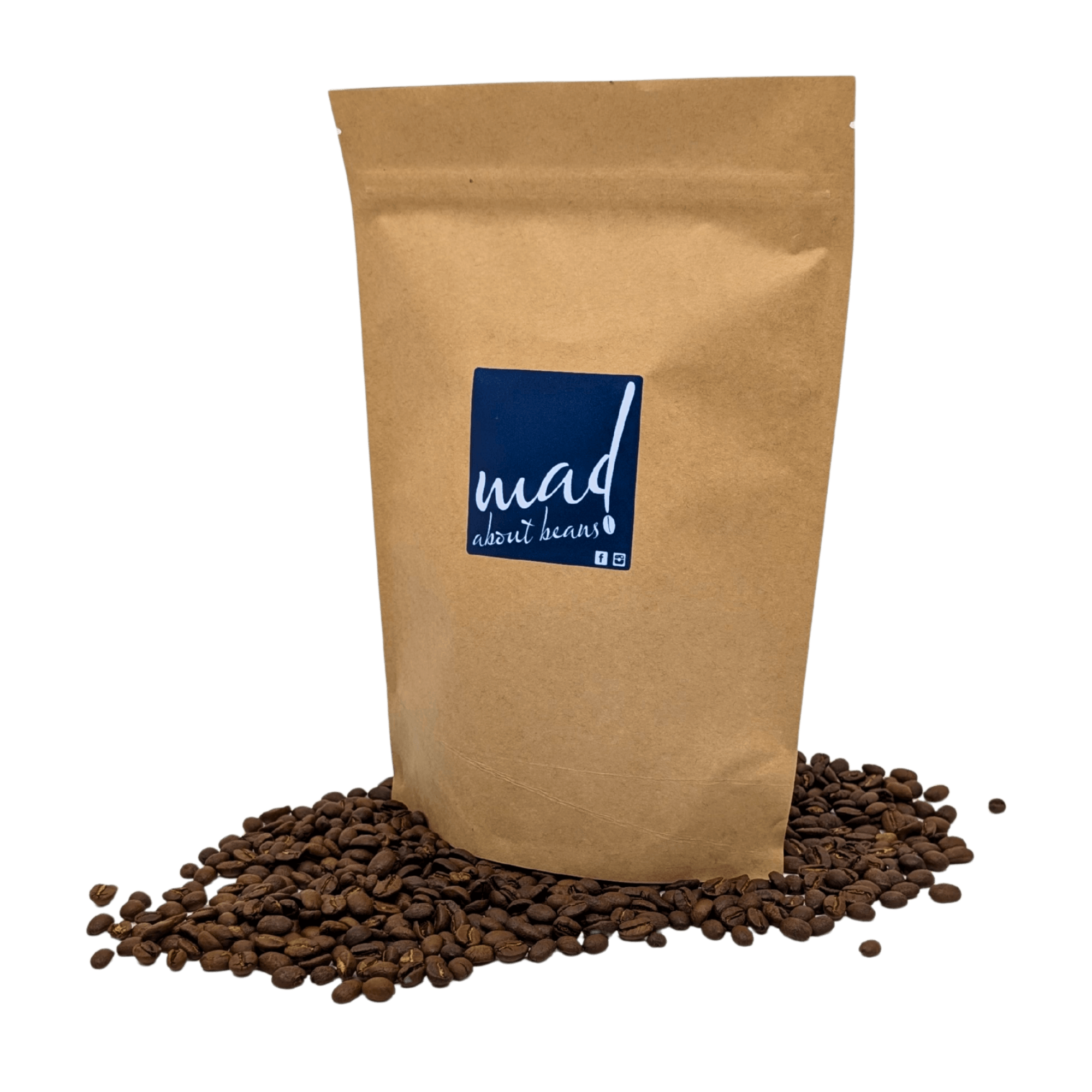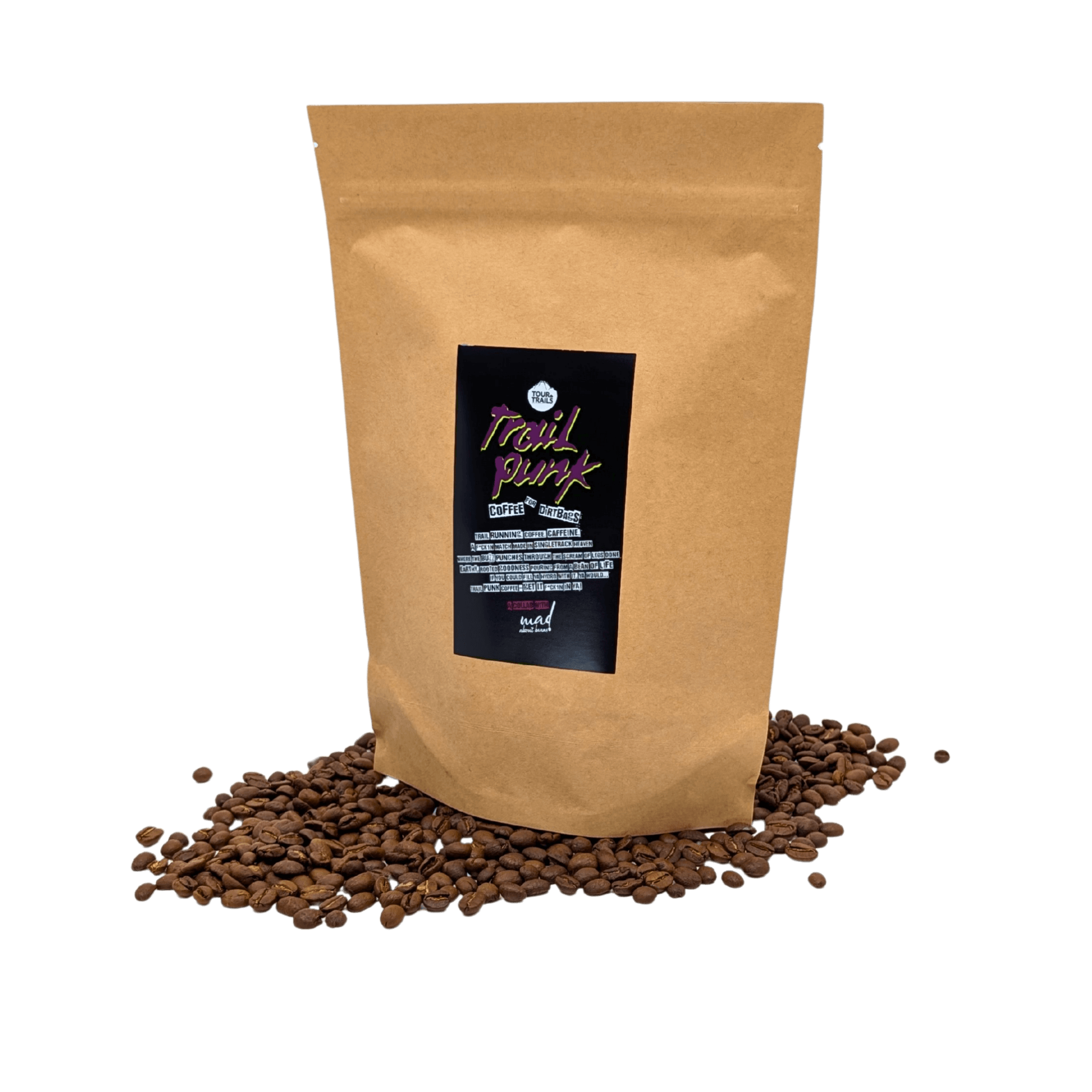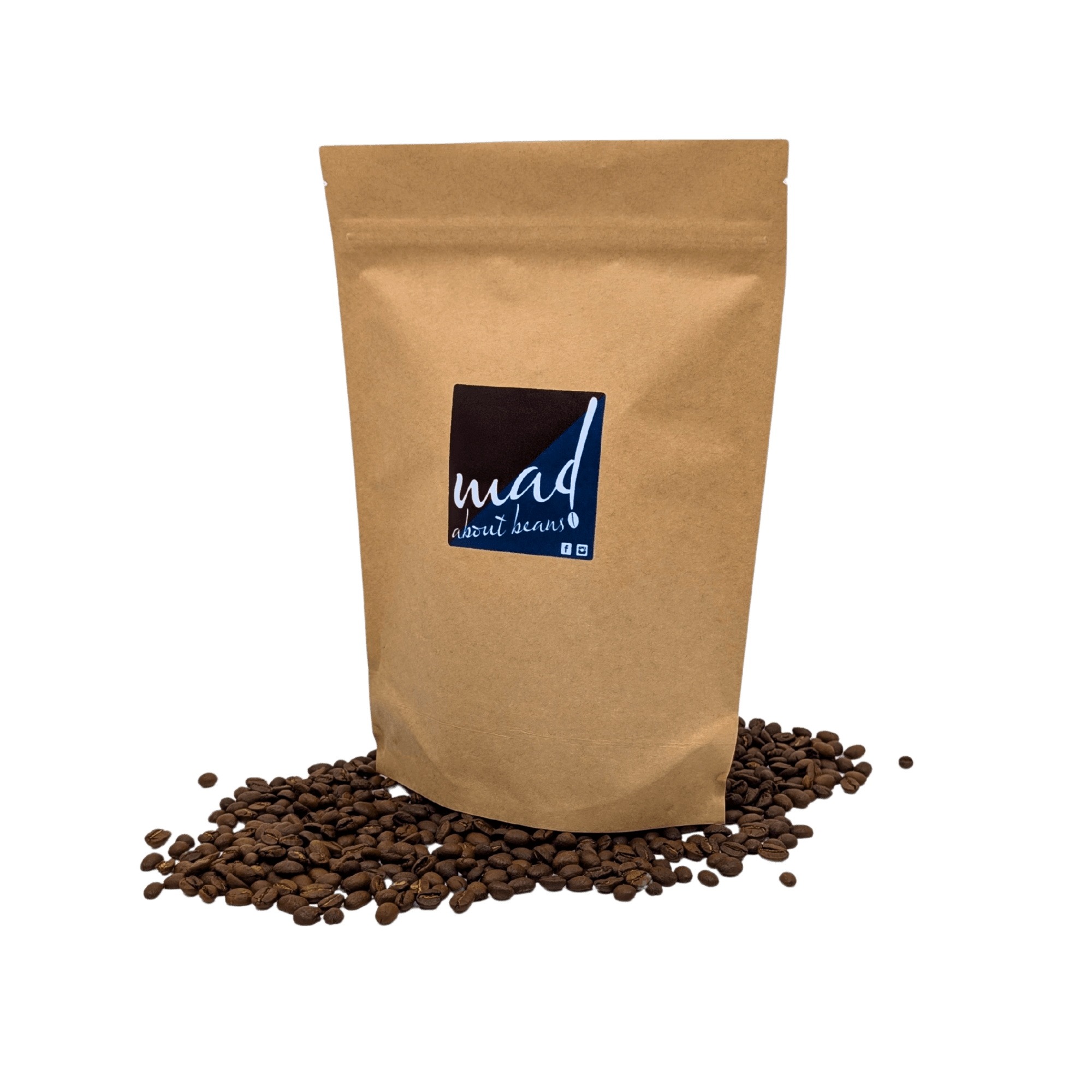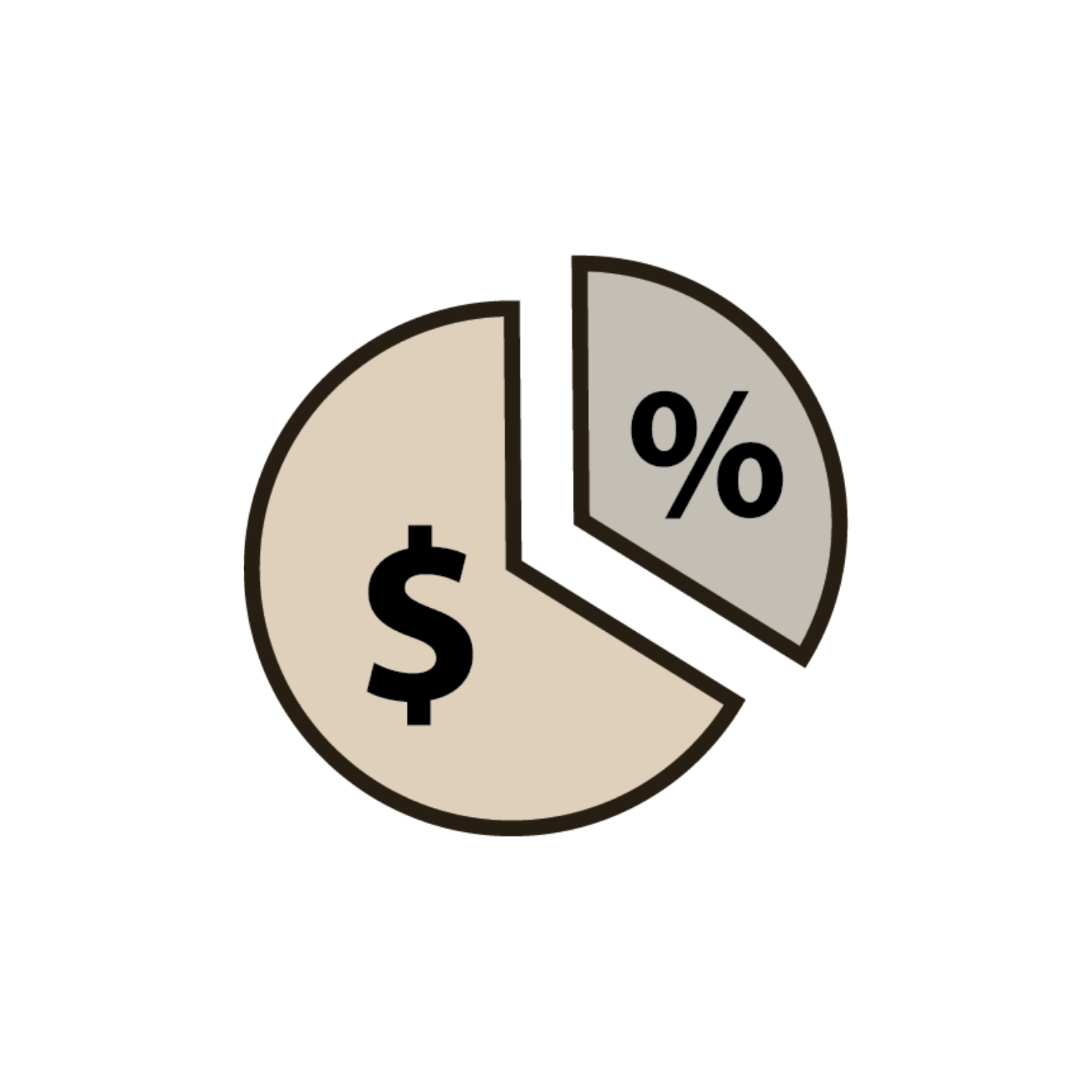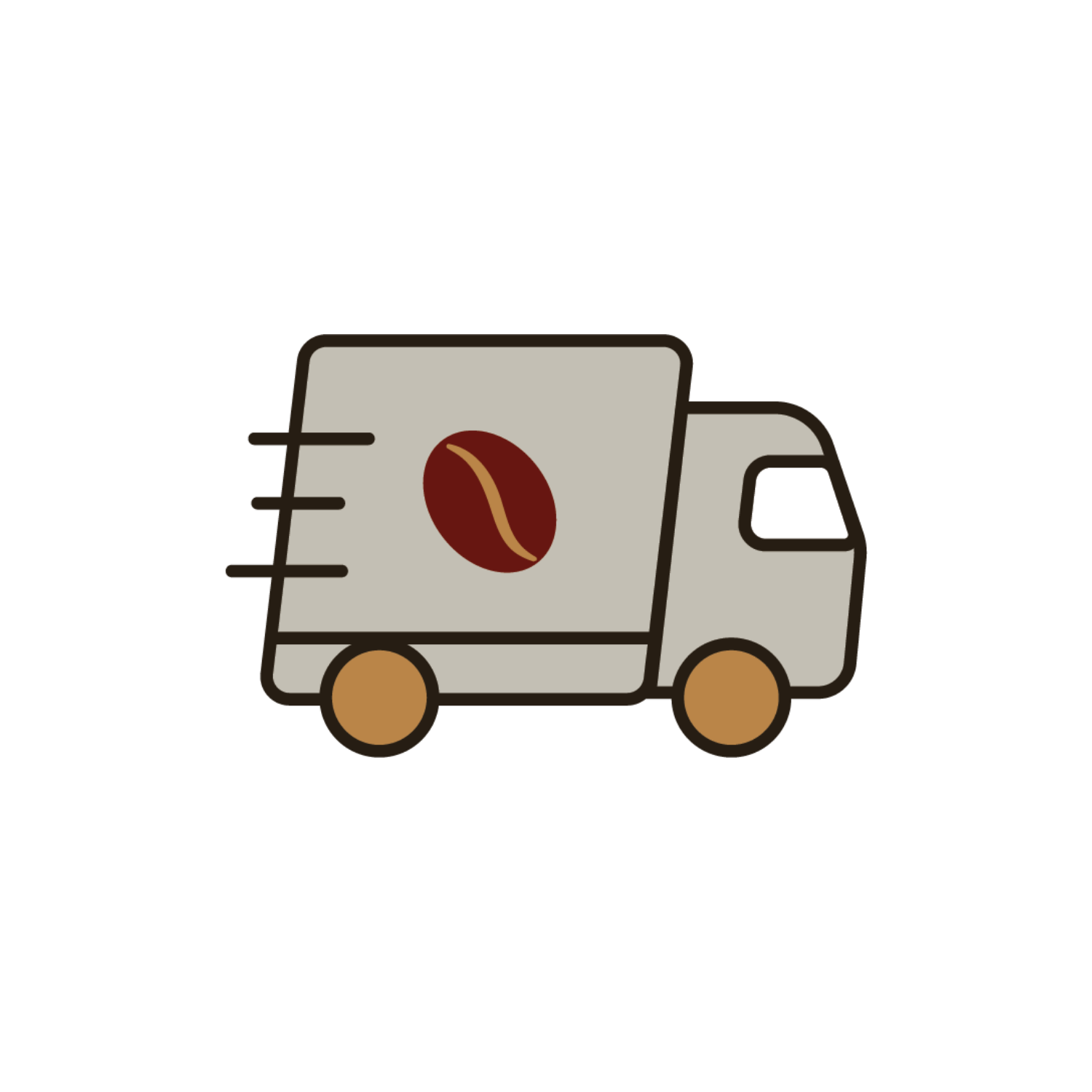FAQs
Got a burning coffee question? We likely answer it below! If not make sure you reach out to us so we can get you the right answer to all your coffee questions!
Coffee FAQs
Why does elevation matter?
Why does elevation matter?
Elevation is just one of dozens of factors that affect the taste of the coffee you are about to drink, but it is an important one.
Elevation has a direct impact on the size, shape, and taste of the coffee beans.
You can only identify the physical differences when the beans are unroasted: The higher grown beans will be smaller and have a tiny crack or fissure in the center that will be closed while the lower grown coffee beans are larger, less dense, and sometimes have a more open fissure.
When well-cared for, high elevation coffee will produce the more acidic, aromatic and flavorful cup of coffee that we love, while lower elevation coffee tends to have a lower acidity with little character in the cup.
This is a summary of the different growing altitudes and the flavour notes they have:
Below 2500 feet (762m)- produces soft beans that are mild, simple, and bland.
Around 3000 feet (914m)- produces smooth, sweet beans with low acidity.
Around 4000 feet (1200m)- produces beans with citrus, vanilla, chocolate, and nutty tones.
Above 5000 feet (1500m)- produces beans with spicy, floral, and fruity tones.
It's important to note that the coffee's flavour is not only affected by the altitude where it is grown but also by the soil quality, rainfall, temperature, and sunlight. Countries that grow coffee at high elevations include - Colombia, Ethiopia, Guatemala, Kenya, and more.
What is the coffee roasting process?
What is the coffee roasting process?
The roasting process is actually a very chemical process. In Sabrina's simple terms, it's like making popcorn. You put dry beans in, wait until they pop, and take out your amazing freshly roasted coffee beans.
When you actually look it up, it's a bit more complicated.
According to Britannica, the process is described as:
Coffee roasting begins with green coffee beans, which themselves have been processed and dried. Temperatures are raised progressively from about 180 to 250 °C (356 to 482 °F) and heated for anywhere from 7 to 20 minutes, depending on the type of roast, light or dark, desired. Roasting releases steam, carbon dioxide, carbon monoxide, and other volatiles from the beans. If the beans are chemically decaffeinated, roasting also removes all but trace amounts of the solvent residues. Roasting results in a loss of weight between 14 and 23 percent, and the internal pressure of gas expands the coffee beans by 30–100 percent. The beans become a deep rich brown, and their texture becomes porous and crumbly under pressure. The most important effect of roasting is the appearance of the characteristic aroma of coffee, which arises from very complex chemical transformations within the bean. Roasting too long can destroy volatile flavour and aroma compounds.
Every coffee has it's own roasting curve. These days you can have roasters that actually do it all automtically, drum speed, air flow, heat... all saved in the background and the roaster can do it almost on its own... that's not applicable for Sven.
Given Svens drive for perfection he does it all himself. And let's be honest, that's why we love his coffees and that's where we can see how passionate he is about his coffee.
Here is a really great little video on what this process is
About The Grind
Why should I grind my own beans and invest in a grinder?
Why should I grind my own beans and invest in a grinder?
If you have never compared pre-ground coffee against freshly ground to brew then you are in for a treat – you really will not believe the impact this has on the quality of your brewing experience and for that reason, grinding fresh should be top of your list when trying to improve your home brewing game. There are many variables that affect how your coffee tastes: time, temperature, brew device… But the most powerful tool in brewing better coffee, assuming you have top beans and decent equipment, is grind size. And this is down to the direct impact this has on extraction.
Without getting too technical, extraction refers to the process of transferring the flavour/aroma compounds from your coffee beans into your hot water. Water dissolves these compounds and these dissolved flavours make up virtually all you taste when you sip back on your freshly brewed cup of coffee.
Now, seeing as only around 30% of a whole coffee bean is soluble in water, it becomes necessary to break the bean down, unlocking these flavour compounds and making them more accessible. This is achieved by grinding the beans, effectively opening them up to extraction by exposing more of the bean’s surface area to water. So quite simply, the FINER you grind your coffee, the MORE FLAVOUR that is EXTRACTED into your water over the same period of time.
So, why don’t we just grind as fine as possible and extract all of the flavour the beans have to offer? Unfortunately, not all flavour and aroma compounds are the same and although some add desirable sweetness and fruity notes to your brew, others lend bitterness and astringency, which can lead to an unpalatable cup. And nobody wants a bitter beverage! To make things even more frustrating, these flavour compounds, both positive and negative, extract at different rates. Therefore, we need to control the degree of extraction taking place bu dictating the contact time between the coffee and water flowing through it. And the best way to do this is by grinding your coffee to the correct particle size for the brew method you are using
How do I select my grind option when purchasing?
How do I select my grind option when purchasing?
This is our guide on which option you should select for your coffee order.

|
Whole Beans - No Grind
The perfect freshly roasted coffee option when you have your own grinder at home and like your coffee made in many different ways.
|
 |
Aeropress Grind
Our perfectly roasted coffee beans are ground to the perfect size for those who love their coffee made with an Aeropress.
|
 |
Espresso Grind
Our small batch freshly roasted coffee beans are ground to the perfect size for those with an espresso machine at home.
|
 |
Filter Grind
The perfect grind of our freshly roasted coffee beans for those who like their coffee brewed in a drip filter, or as cold brew drip.
|
 |
Plunger Grind
French Press or Plunger - we don't mind what you call it. This is the perfect grind of our perfectly roasted beans for those who love this brew.
|
 |
Stovetop Grind
The perfect grind for lovers of Stovetop, Bialetti, Percolator, and Mokka Pot brews of our freshly roasted coffee beans.
|
Coffee Terminology
What do you mean by Coffee Process?
What do you mean by Coffee Process?
Coffee processing involves picking ripe coffee cherries (the fruit) from the coffee tree removing the beans (seeds), and preparing them for roasting, which happens quickly after harvesting to ensure the beans don’t spoil. As with many aspects of the lifecycle of our favorite beverage, coffee processing is closely tied to the environment and conditions where the beans are grown.
There are three primary methods, all influenced by tradition and the resources available. The first is a centuries-old “dry” method, the second is the “wet” method, and the third is a hybrid of the other two. All three can significantly influence the taste of the coffee in your cup.
Source: https://www.aboutcoffee.org/beans/processes/
What does Washed Process or Wet Method mean?
What does Washed Process or Wet Method mean?
This method, developed after the dry method, removes the pulp from the beans (seeds) inside the coffee cherry. Then, the coffee beans are dried with only the parchment, a thin, protective layer wrapped around the bean. Since the pulp is separated from the coffee bean, the beans must have absorbed enough natural sugars and nutrients during the growing cycle to develop flavor.
The farmer’s approach to growing the coffee plants and the local terroir (chemistry of the soil, microclimates and sunlight) have a significant impact on the coffee’s taste. That’s why many single-origin and specialty coffees are washed, as the process showcases their unique characteristics. Washed coffees may have floral, sour and/or citrus notes, and their flavor often is described as “clean.”
Pulping and Sorting
First, the coffee cherries are pulped, separating the pulp from the bean. Then, the beans are sorted. They pass through water channels to separate by weight, with the lighter, unripe beans floating to the top of the water tank and the heavier, ripe beans sinking to the bottom. Next, they pass through a series of rotating drums to separate them by size.
Fermentation and Drying
The beans are then placed in large, water-filled fermentation tanks, where naturally occurring enzymes dissolve another layer, the mucilage, from the beans. This can take between 12 and 48 hours. When fermentation is complete, the beans feel rough to the touch. After rinsing, the beans are ready for drying.
As with the natural method, the beans must be dried to approximately 11% moisture to properly prepare them for storage. They can be sun-dried by spreading them on drying tables or floors, where they are turned regularly, or they can be machine-dried in large tumblers. After drying, the papery inner parchment is removed.
Source: https://www.aboutcoffee.org/beans/processes/
What does Natural Process or Dry Method mean?
What does Natural Process or Dry Method mean?
This time-tested method is still used in many countries. The coffee cherries picked from the coffee tree remain intact, and the process involves drying both the fruit and the beans together. Freshly picked coffee cherries are spread on huge surfaces to dry in the sun. To prevent spoilage, they are raked and turned throughout the day, then covered at night or during rain. This process continues until the moisture content of the cherries drops to 11%, which could take several weeks, depending on the weather. The dried beans are then hulled, removing the entire dried husk, including the outer layer, pulp, and parchment (a thin, protective inner layer).
With effective harvesting, the natural process can produce interesting coffees with a fuller body and uniquely sweet and fruity flavor profile. They may have more of a “wine” or fermented taste to them. However, if a batch of cherries includes both ripe and unripe fruit, it can lead to inconsistent quality and flavor in the beans.
Source: https://www.aboutcoffee.org/beans/processes/
What does Semi-Washed or Honey Process mean?
What does Semi-Washed or Honey Process mean?
This blended method of processing goes further than the natural process, removing the pulp of the coffee cherry. However, it leaves at least some of the mucilage layer intact, unlike in the wet process. The sugary mucilage caramelizes during the drying process, preserving some sweetness and bringing out the beans’ natural flavors.
Semi-washed coffees can more closely resemble washed coffees or natural coffees. Typically, if more mucilage is removed, the coffee will be closer to a washed coffee, and if more mucilage remains on the bean, it will be closer to a natural coffee. This can create a range of flavor profiles, but generally, leaving more mucilage on the bean results in a sweeter taste.
Source: https://www.aboutcoffee.org/beans/processes/
Our Standards
How do I know my coffee is fresh?
How do I know my coffee is fresh?

What do you mean by Organic?
What do you mean by Organic?
At its core, organic coffee is grown without the use of synthetic fertilisers, pesticides, herbicides, or GMOs. Instead, farmers rely on natural methods such as composting, shade-growing, crop rotation, and biological pest control.
There are several governing bodies that set those standards. Unfortunately, during our travels, we've noted that for the small farmer, it's hard to actually get accredited, so we had to take a different approach.
Now, to ensure that the coffee we use is organic, we either have visited the farmer ourselves or we work with the importer who visits the farmer regularly and therefore knows how the coffee has been grown. More information is also provided on every product page.
What do you mean by Ethically Sourced?
What do you mean by Ethically Sourced?
Ethically sourced is very important to us and continues to be a driving factor in the coffee we use.
Ethically sourced means to us that the money we spend on the coffee is received by the farmer, and we can actually make an impact for them. Initially, we only bought coffee when we had visited the farmer ourselves.
However, with COVID and everything else happening, we needed to change our approach. The coffee industry has come a long way and we noted more and more importers having their own projects, sourcing coffee directly from small batch farmers and not just paying them fairly and directly, but also helping them with socio economic support.
We realised that they could have a much bigger impact than just us. So we picked our new importer and went after projects that we wanted to support, and you can read about it on each product page.
What do you mean by Fair Margin for all?
What do you mean by Fair Margin for all?
As you can imagine, there are various people involved in getting the coffee from the origin to us.
The farmer, the warehouse team, the shipping person, the importer, the quality team, the driver and and and ....
For us, a fair marign means, that the money we pay is not stuck with the importer or the logistic company but that the money is actually received by the farmer and their family.
There have been instances where farmers had to close down as the money they earned was not sufficient to cover their costs. So we want to make sure everyone is making their own sufficient share.
And let's be honest, that's easier said than done, but we are giving our best. We purposefully don't go for the cheapest option. We aim to work with smaller importers and small batch coffee farmers. And we only pick the coffee where we align with the story behind its source.
Order Questions
How fresh will my coffee be?
How fresh will my coffee be?

Do you offer local delivery?
Do you offer local delivery?
We sure do! We offer FREE local delivery within a 5km radius of our Mad About Beans HQ. If your order qualifies you will be able to select this option in checkout.
Do you offer local pickup?
Do you offer local pickup?
We don't currently offer local pickup as we find it challenging to be able to find a time that works for everyone.
BUT we do offer FREE local delivery within a 5km radius of our Mad About Beans HQ. If your order qualifies you will be able to select this option in checkout.
When will my order ship?
When will my order ship?
Because we only roast to order this means that there may be a slight delay in you getting your shipping confirmation.
We currently roast on Mondays and Fridays . This means your order will ship after these batch roasting days. As soon as your coffee is out of our roaster and cool enough to pack it will be shipped direclty to you. You will then receive your tracking details.
How much is shipping?
How much is shipping?
We promise to ship your order as soon as it is cooled enough to pack.
Subscription Orders (Our Monthly Coffee Club Deliveries) receive free shipping on orders over $60.
Shipping charges on all other orders are as follows:
- Orders under $100 - Standard Shipping $12
- Orders over $100 - Ship FREE
- Express Shipping - $20
- FREE Local Delivery within a 5km radius of our HQ. You can only select this option if your delivery address is within this distance.
For our full shipping policy, please head here.
Do you offer subscriptions?
Do you offer subscriptions?
We sure do! We call it our Monthly Coffee Club.
How does the Monthly Coffee Club work?
How does the Monthly Coffee Club work?
Get the freshest coffee delivered directly to your door every single month. Sounds great doesn't it!
Before you can cancel or pause your subscription you must have received three deliveries.
All monthly subscription orders over $60 are shipped free of charge.
Your monthly subscription will automatically renew on the same date each month unless you pause, skip or cancel.
How do I manage my Monthly Coffee Club Subscription?
How do I manage my Monthly Coffee Club Subscription?
You can do this from your customer portal simply log in using the little "person" icon in the header of the site and click on the "Manage Subscription" button when you are logged in.
Do you supply to other businesses or offices?
Do you supply to other businesses or offices?
We sure can! To chat to us about this make sure you reach out directly to us via our Contact Us page.
